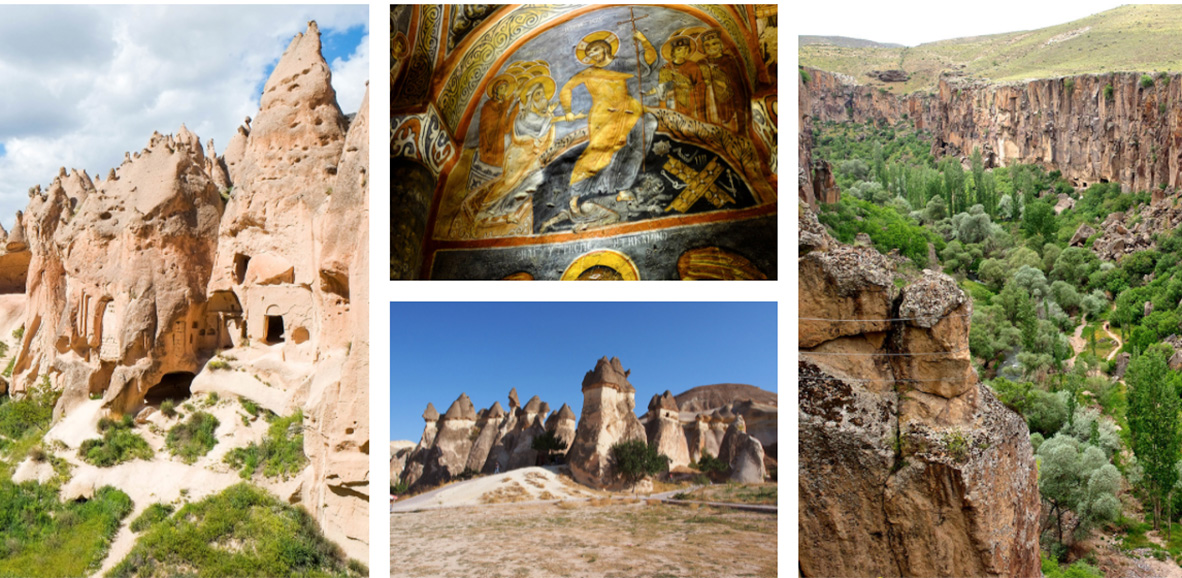The fairy chimneys are in Cappadocia, a region that was once part of the ancient Silk Road trade route. The region was pillaged and invaded by many big civilisations throughout the history. The Hittites, Persians, Romans, Byzantines and Ottomans all claimed to own this region at one time. It is now located in the central area of Turkey.
Fairy chimneys are unusual-shaped earth-pillars of natural beauty formed in pyroclastic deposits that include thick units of tuffs, volcanic ashes, and ignimbrites. The best locations to observe the formation of fairy chimneys where pyroclastic units are the thickest are Goreme and Pasabag, which have the greatest pyroclastic deposits. During the Plio-Pleistocene period, these pyroclastic deposits were subjected to significant fluvial and aeolian erosion, resulting in the formation of fairy chimneys.
Fairy chimneys in the Cappadocia region vary in form and from one location to another. The Pasabag and Goreme have several different kinds of magnificent fairy chimneys. Fairy chimneys are made up of a cap, a neck, and a body. Bodies of fairy chimneys are created out of tuff, tuffite, volcanic ash, pumice, non-welded to medium welded tuff blocks; however, caps of fairy chimneys are formed by welded tuffs whereas they are generated by lahar andesite and basalt in the southern area.
Both physical and chemical weathering are taking place in the region, as evidenced by the terrain and shape of the fairy chimneys. Depending on which agent is most prevalent in the region, and to what degree it predominates, different chimney types are formed.
Debris flows, for example, form steep falls. As the result of numerous processes at work in nature, these falls exhibit an incredible amount of biodiversity. For example, distinct types of erosive agents such as aeolian, fluvio-atmospheric, and thermoclastic create varied reactions with rock masses depending on the lithological composition and structural features. The caps of fairy chimneys are far more resistant to erosion than their bodies and necks. Aeolian and thermoclastic erosion affect the caps while winds and thermoclastic erosion affect the necks.



Comment (0)